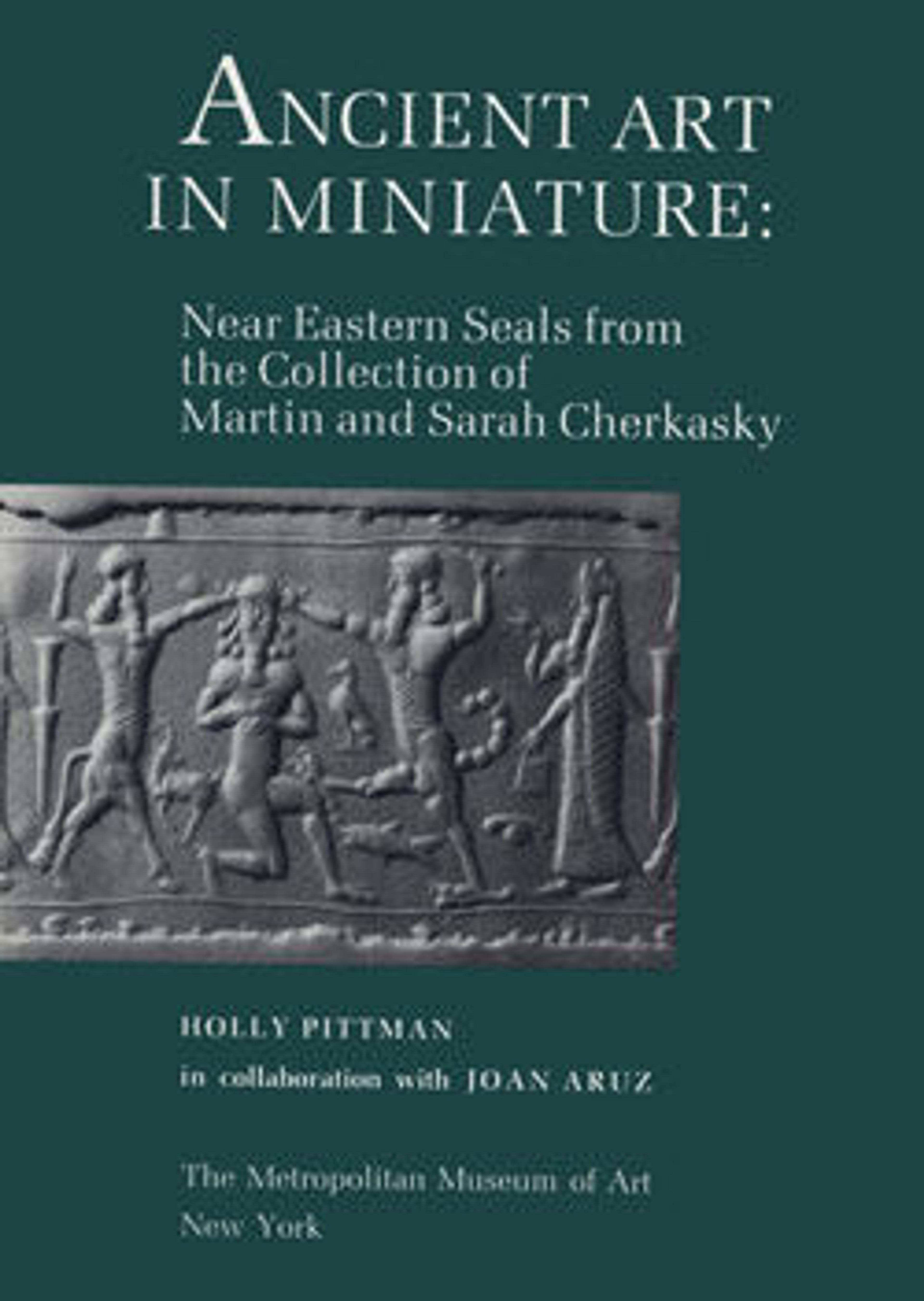Stamp seal: hunters and goats, rectangular pen (?)
The earliest stone seals of the Gulf region were made of steatite hardened by firing and often glazed after they were carved. The impression of the hemispherical stamp seal depicted here shows a male figure in the upper field who grasps a caprid by the neck. To the left, a male figure holds a staff. Below, a recumbent caprid reclines beneath a gridded rectangle. A snake and perhaps a monkey(?) are also depicted in the field. The hemispherical form and round sealing face are typical of seals of the Gulf region, as are the incised lines and concentric circles that decorate the back of this seal. Similar seals have been found in Mesopotamia, Iran, and the Indus Valley, areas with which Gulf merchants traded and with whom they shared a common visual vocabulary.
Artwork Details
- Title:Stamp seal: hunters and goats, rectangular pen (?)
- Period:Middle Bronze Age
- Date:ca. early 2nd millennium BCE
- Geography:Dilmun
- Culture:Dilmun
- Medium:Steatite or chlorite
- Dimensions:0.47 in. (1.19 cm)
- Credit Line:Gift of Martin and Sarah Cherkasky, 1987
- Object Number:1987.96.22
- Curatorial Department: Ancient West Asian Art
More Artwork
Research Resources
The Met provides unparalleled resources for research and welcomes an international community of students and scholars. The Met's Open Access API is where creators and researchers can connect to the The Met collection. Open Access data and public domain images are available for unrestricted commercial and noncommercial use without permission or fee.
To request images under copyright and other restrictions, please use this Image Request form.
Feedback
We continue to research and examine historical and cultural context for objects in The Met collection. If you have comments or questions about this object record, please contact us using the form below. The Museum looks forward to receiving your comments.
